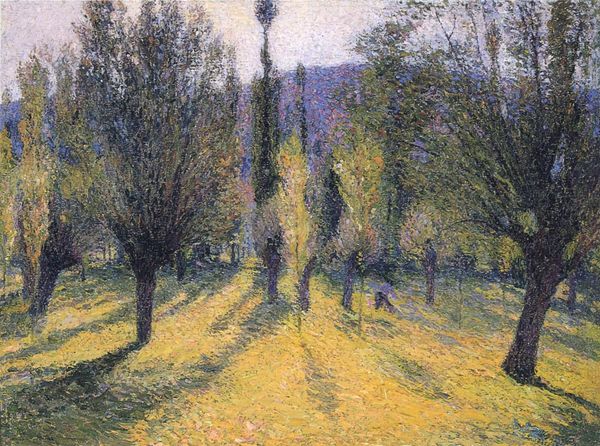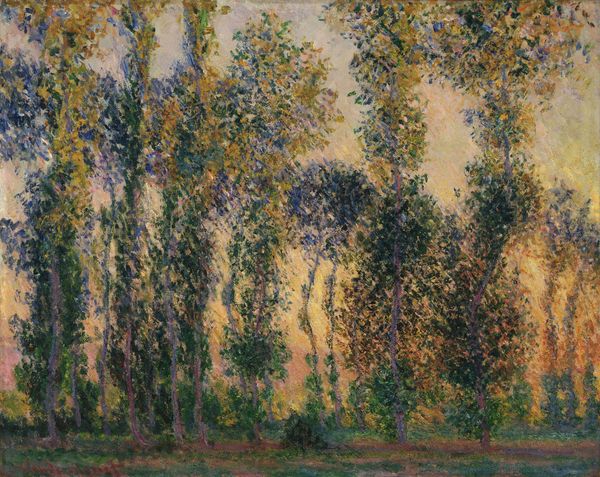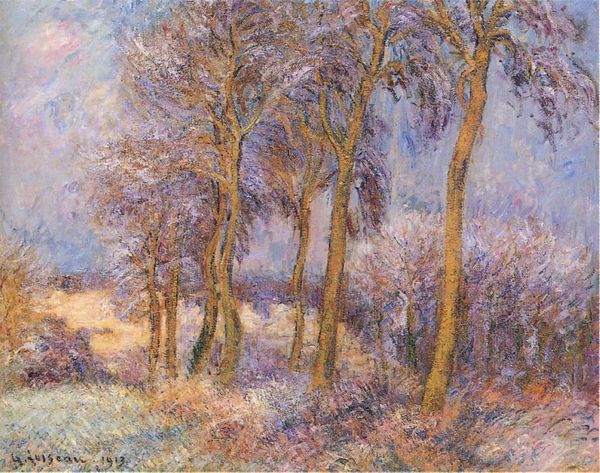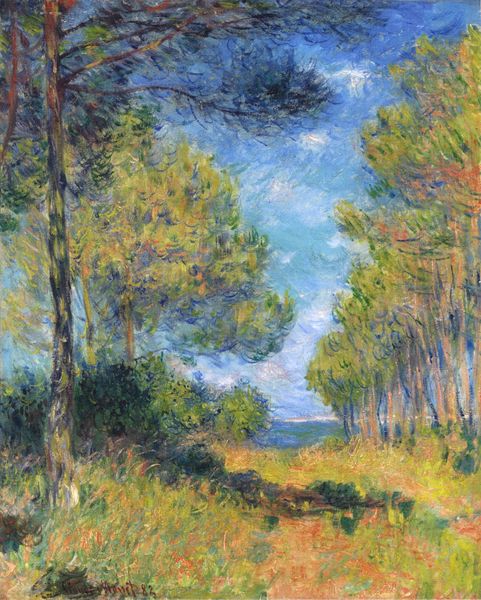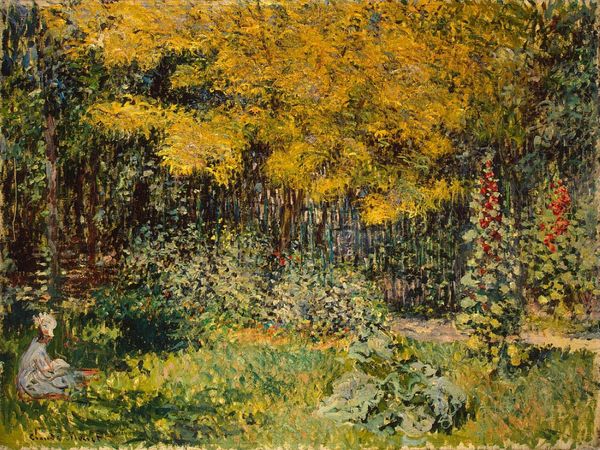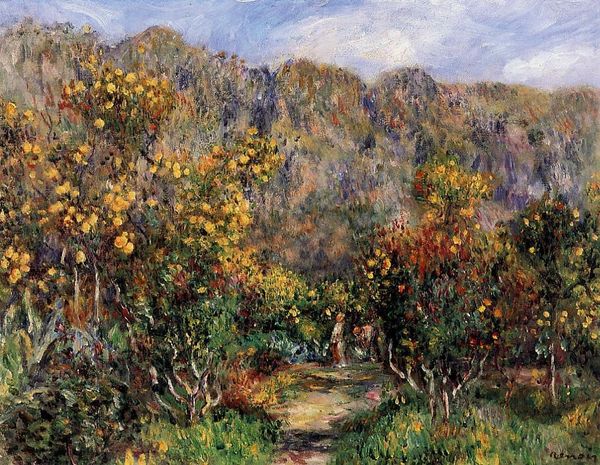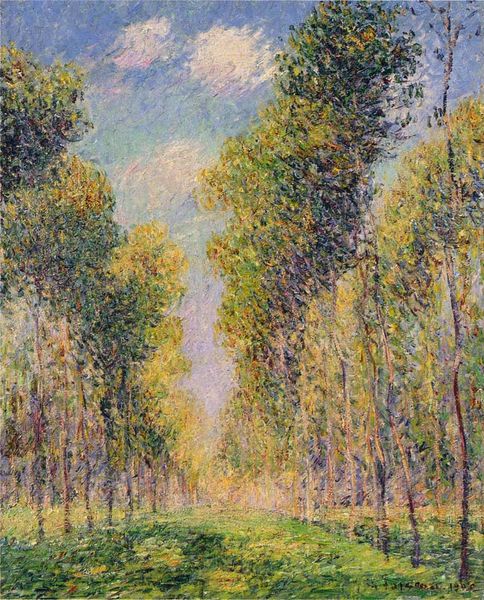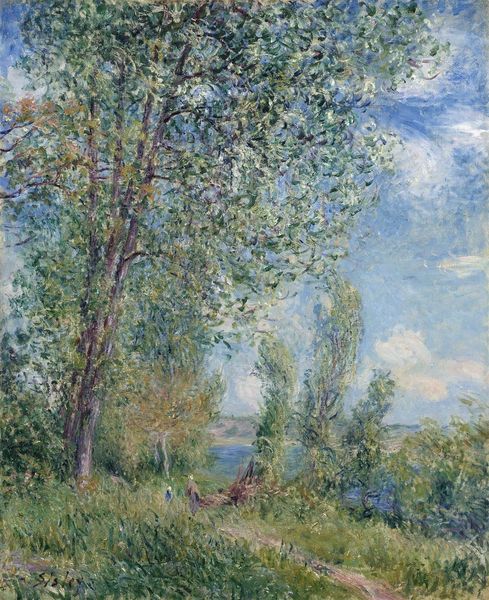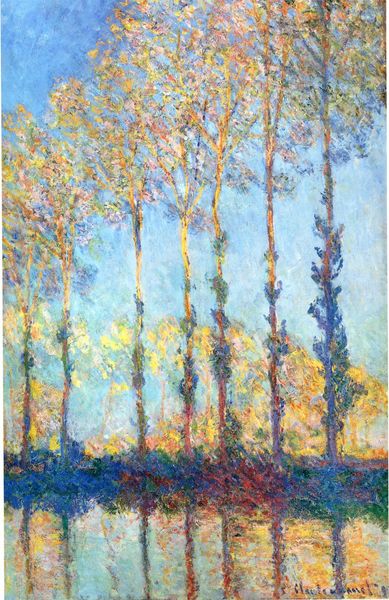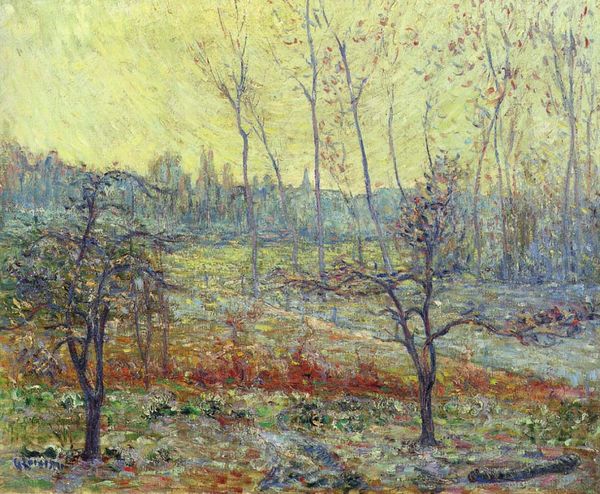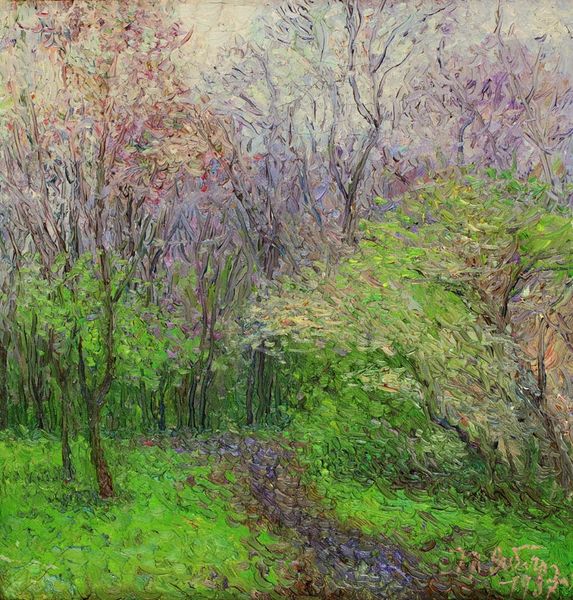
painting, plein-air, oil-paint
#
tree
#
impressionist
#
painting
#
impressionism
#
plein-air
#
oil-paint
#
landscape
#
impressionist landscape
#
plant
Copyright: Public domain
Curator: Immediately, it evokes the feeling of standing in a garden at midday, squinting in the sun. The thick brushstrokes seem to almost vibrate on the canvas. Editor: Well, let’s unpack this sun-drenched scene a little further. The artwork here is called “Out of My Window," an oil painting believed to be by Robert Lewis Reid. While the exact date is unknown, the work aligns with Reid’s known plein-air style and explorations within Impressionism. Curator: The window presents such an evocative symbol. It hints at interiority, introspection, while simultaneously opening a portal to the external world, the realm of nature. The colors, especially that soft yellow ochre, speaks of a harvest season perhaps. Is this Reid offering us a meditation on inner and outer landscapes? Editor: Perhaps. And Reid certainly understood the labor inherent in depicting such a scene en plein air. To capture that fleeting light, the materials become integral—oil paint's pliability, the specific weave of the canvas supporting quick, responsive gestures. Notice how the materiality reinforces the perceived “spontaneity”, something art audiences of the time readily consumed as a form of luxury, a fleeting, restful moment. Curator: Yes, those tall green plants in the foreground reaching skyward… they're less detailed, more suggestive. This imbues the whole scene with a sense of potentiality, growth, but also a certain fragility given their blurred execution. Do you think they are placed to guide our perspective in any particular way? Editor: They function as more than just visual guides. The brushwork involved suggests they would have had to been sketched quickly, yet layered with detail to have depth. The physical engagement—mixing pigments, the artist's posture while rapidly applying the paint – that all speaks volumes of Reid’s commitment to direct, sensory interaction with the world before him. I suspect, these techniques involved labor which directly increased the monetary value of the piece. Curator: Ultimately, that sensory interaction seems designed to convey the fleeting, emotional experience of seeing. It asks, “what is this place?”, but really invites, “how does this place make you *feel*?”. Editor: And "what process, what social value, what class implications are hidden in plain sight, adding cultural layers?". That's the interesting paradox we see across many landscapes and impressionist art objects produced in similar fashion to Reid’s, I feel. Curator: I suppose looking at it in that way encourages us to broaden our horizons. Editor: Indeed, as Reid encourages us to see what he sees, we ought to inquire about what he, in turn, obscures through the processes, styles, and visual tricks employed to generate the sensory feeling it creates in you, the art consumer.
Comments
No comments
Be the first to comment and join the conversation on the ultimate creative platform.

